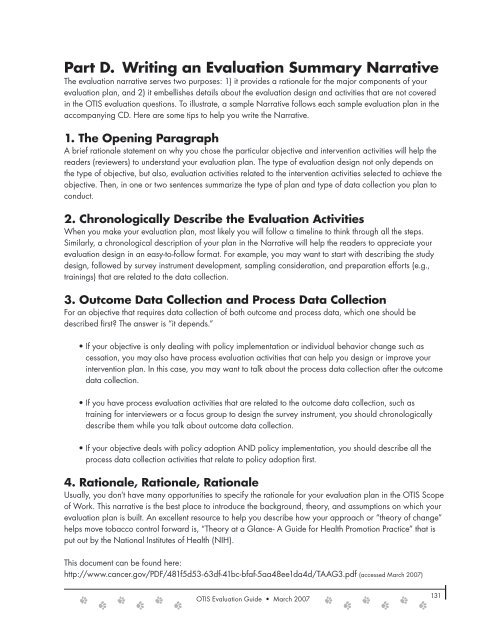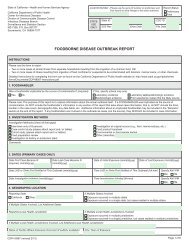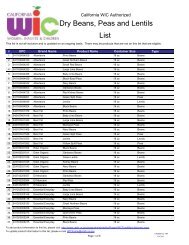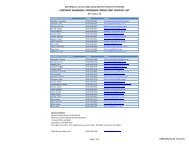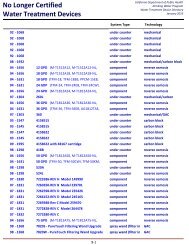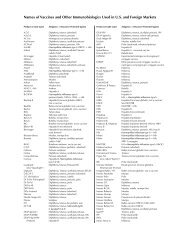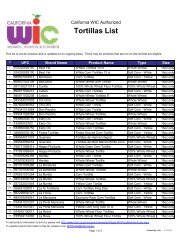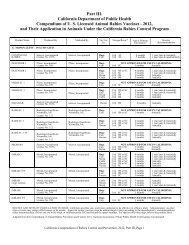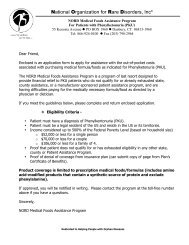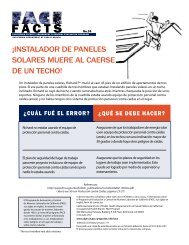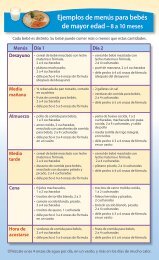OTIS Evaluation Guide (PDF) - California Department of Public Health
OTIS Evaluation Guide (PDF) - California Department of Public Health
OTIS Evaluation Guide (PDF) - California Department of Public Health
You also want an ePaper? Increase the reach of your titles
YUMPU automatically turns print PDFs into web optimized ePapers that Google loves.
Part D. Writing an <strong>Evaluation</strong> Summary Narrative<br />
The evaluation narrative serves two purposes: 1) it provides a rationale for the major components <strong>of</strong> your<br />
evaluation plan, and 2) it embellishes details about the evaluation design and activities that are not covered<br />
in the <strong>OTIS</strong> evaluation questions. To illustrate, a sample Narrative follows each sample evaluation plan in the<br />
accompanying CD. Here are some tips to help you write the Narrative.<br />
1. The Opening Paragraph<br />
A brief rationale statement on why you chose the particular objective and intervention activities will help the<br />
readers (reviewers) to understand your evaluation plan. The type <strong>of</strong> evaluation design not only depends on<br />
the type <strong>of</strong> objective, but also, evaluation activities related to the intervention activities selected to achieve the<br />
objective. Then, in one or two sentences summarize the type <strong>of</strong> plan and type <strong>of</strong> data collection you plan to<br />
conduct.<br />
2. Chronologically Describe the <strong>Evaluation</strong> Activities<br />
When you make your evaluation plan, most likely you will follow a timeline to think through all the steps.<br />
Similarly, a chronological description <strong>of</strong> your plan in the Narrative will help the readers to appreciate your<br />
evaluation design in an easy-to-follow format. For example, you may want to start with describing the study<br />
design, followed by survey instrument development, sampling consideration, and preparation efforts (e.g.,<br />
trainings) that are related to the data collection.<br />
3. Outcome Data Collection and Process Data Collection<br />
For an objective that requires data collection <strong>of</strong> both outcome and process data, which one should be<br />
described first? The answer is “it depends.”<br />
• If your objective is only dealing with policy implementation or individual behavior change such as<br />
cessation, you may also have process evaluation activities that can help you design or improve your<br />
intervention plan. In this case, you may want to talk about the process data collection after the outcome<br />
data collection.<br />
• If you have process evaluation activities that are related to the outcome data collection, such as<br />
training for interviewers or a focus group to design the survey instrument, you should chronologically<br />
describe them while you talk about outcome data collection.<br />
• If your objective deals with policy adoption AND policy implementation, you should describe all the<br />
process data collection activities that relate to policy adoption first.<br />
4. Rationale, Rationale, Rationale<br />
Usually, you don’t have many opportunities to specify the rationale for your evaluation plan in the <strong>OTIS</strong> Scope<br />
<strong>of</strong> Work. This narrative is the best place to introduce the background, theory, and assumptions on which your<br />
evaluation plan is built. An excellent resource to help you describe how your approach or “theory <strong>of</strong> change”<br />
helps move tobacco control forward is, “Theory at a Glance- A <strong>Guide</strong> for <strong>Health</strong> Promotion Practice” that is<br />
put out by the National Institutes <strong>of</strong> <strong>Health</strong> (NIH).<br />
This document can be found here:<br />
http://www.cancer.gov/<strong>PDF</strong>/481f5d53-63df-41bc-bfaf-5aa48ee1da4d/TAAG3.pdf (accessed March 2007)<br />
<strong>OTIS</strong> <strong>Evaluation</strong> <strong>Guide</strong> • March 2007<br />
131


